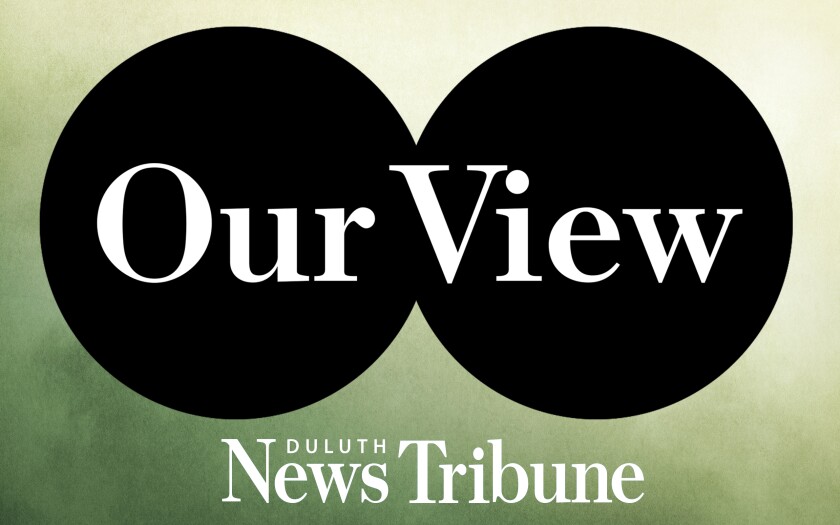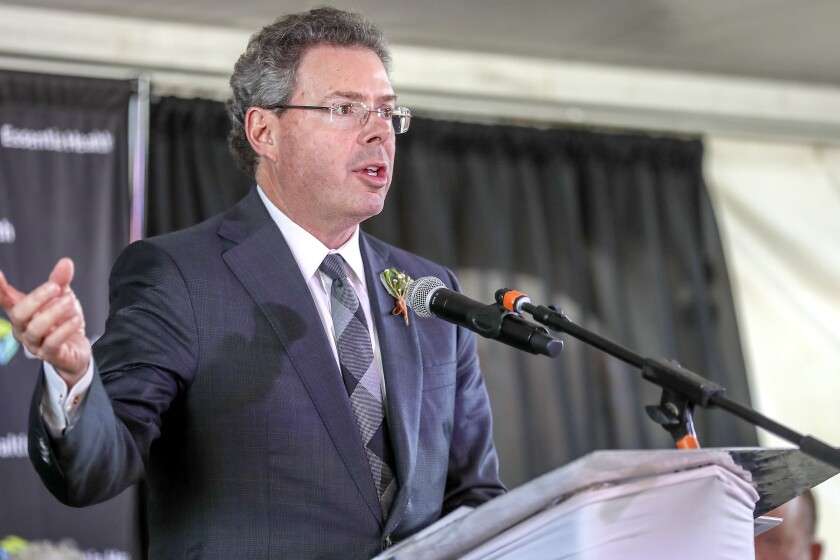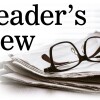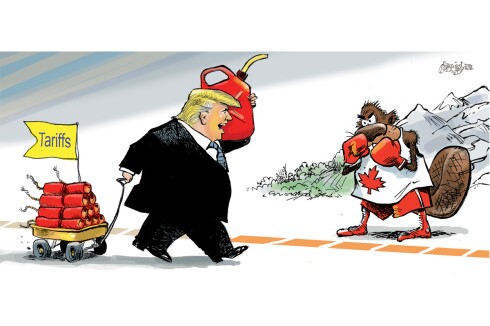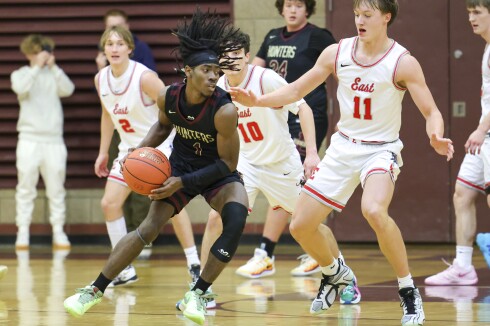Those of us in the wilds of northern Minnesota fortunate enough to live in the deep woods, on a glassy lake, or somewhere else without nearby neighbors or towns make sacrifices for the privilege. Things like pizza delivery are out while long drives to see the doctor are in, as just a couple of examples.
Dr. David Herman, CEO of Essentia Health in Duluth, can’t help with the food delivery. But he’s not willing to concede when it comes to health care quality just because someone lives in a remote area and not in a city like Duluth.
ADVERTISEMENT
Where you live can’t be allowed to determine your health outcomes, he said in an exclusive interview this early winter with the News Tribune Editorial Board.
“To what extent should a tradeoff be reasonable?” he asked. “When you live in a rural area, you’ve, quote, made a decision. But you may or may not have. When you’re healthy, you never think about that. When you’re 75 years old, you start to think more about where you live. But when you’re 35 and having a family and working on the farm or working in the mine, that’s not something you’re considering. So, do we tell people you can live (in a rural setting) until you’re 65, and then you have to move closer to health care? … These are conversations we need to have. Do our expectations meet realities?”
If the expectation is abundant, high-quality health care in rural places, the answer is no. Rural populations are older, with worsening health needs and increasing visits to health care professionals. In an industry dogged everywhere by too few doctors, nurses, therapists, and other professionals, workforce challenges and staffing shortages are even more pronounced in non-metro areas, leading to pharmacy deserts, vaccine deserts, and worse.
Staff vacancies in Minnesota hospitals were nearly 13% this year, compared to about 4.7% pre-pandemic in 2019, according to the Minnesota Hospital Association. Making matters worse, nearly half of Minnesota nurses work part-time now, health systems outside the Twin Cities saw a 22% increase in nurse departures this year compared to last year, and a fourth of all doctors in the state will reach retirement age or turn older in the next decade.
“The health care system was designed for the many to pay for the few, and the many to take care of the few. And we’ve flipped that upside down now where it’s the few paying for the many, and now it’s the few caring for the many,” Dr. Herman said. Put simply, we’re older, patients and health care providers alike; sicker, with more chronic diseases that are expensively treatable; and living longer, which only adds to the burden on an already overtaxed system.
Is it any wonder then that Essentia, Aspirus St. Luke’s in Duluth, and our Twin Ports colleges and universities — and even our high schools and middle schools — are partnering and scrambling to attract and train health care professionals? Essentia alone offered 480,000 hours of clinical training to more than 2,700 students in the fiscal year that ended June 30.
“Just posting a job now doesn’t work,” Herman said. “You have to really go out and recruit. Probably the most important thing you can do is make your organization a great place to work.”
ADVERTISEMENT
And is it any wonder that technology is increasingly being tapped, including telehealth, electronic medical records, and AI, including to record doctors’ notes during consultations with patients?
“Let’s design the work so the things that only humans can do, humans are doing,” Herman said. “How do we leverage technology to fill some of those gaps and reserve the very precious resource of people for things that only people can do? That’s something that’s moving forward.”
At Aspirus Health, “rewriting this story (and) making health care more accessible for people in rural areas” is top of mind, too.
“Patients in rural areas deserve the same high-quality care as anyone in a metro area,” Greg Ruberg, president of Aspirus Lake View in Two Harbors, said in a statement in late November. “That’s why we’re constantly innovating to overcome barriers and (to) deliver personalized care.”
Mental health care is a particular and persistent challenge for rural areas, he said.
So is access to specialty care, according to Dr. Steve Skube, a general surgeon at Aspirus St. Luke’s in Duluth.
"Traveling long distances not only delays treatment but can also be a financial burden for patients," Dr. Skube said in the statement.
ADVERTISEMENT
Addressing the challenges of providing quality health care in the wilds of northern Minnesota and in other remote places is the aim behind Rural Health Month in November and National Rural Health Day on Nov. 21. It’s also why there’s a Minnesota Rural Health Association and an annual Minnesota Rural Health Conference , which this summer, on June 9-10, will be held in Duluth.
Clearly, as Dr. Herman said, these are conversations we need to be having.
